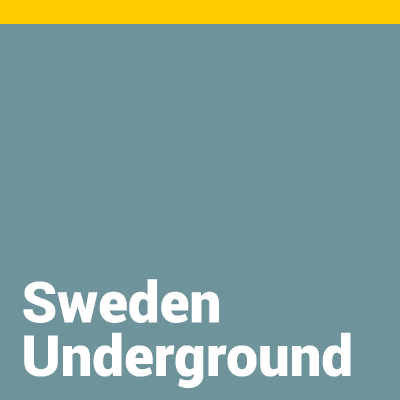

Facilities can be built in attractive, central locations
One favourable feature of underground facilities is that they have relatively limited impact on the environment at surface level, both during construction and in operation. Even if the costs of building underground can be relatively high, such solutions offer advantages that may outweigh the cost aspect. These include freeing surface land for other purposes, operational benefits, and reducing environmental impact. Sustainable development is obvious when forming our society based on today’s standard, and here the subsurface development has a very important role to play.
Land is at a premium in the centres of large cities. By moving certain functions into tunnels and rock caverns, and into cuttings and rock cavities that are then covered, this retains a central location while creating space for other activities in attractive areas on the surface.
An underground central location is more advantageous than a surface facility in a more peripheral location. This was one of the reasons why the company Bahnhof decided to build a data centre in a former nuclear bunker in central Stockholm. Another example is the National Library of Sweden, where room was created for a large book storage in a rock cavern under Humlegården Park, immediately under the main building, rather than building on a completely separate site.
Other examples are the Bergakungen cinema complex in Gothenburg and the Johannes emergency and rescue centre in Stockholm.

Frees up land for other uses
By moving surface activities underground, areas can be freed up for other, higher-priority activities. When roads are placed in tunnels, or built in cuttings and covered, extensive areas of land can be freed up and scars in the landscape healed. New buildable land is created in highly valuable locations that more than cover the cost of moving a facility down into the rock.
One example is the construction of the Göta Tunnel in Gothenburg. Moving a motorway underground released land in the inner city for building, the transfer traffic was drastically reduced, and the land previously occupied by the road became attractive residential and commercial areas near the harbour. The motorway tunnels in Stockholm have had a similar effect.

Construction of underground car parks in Stockholm, such as Stigsbergsgaraget, has reduced the amount of space taken up by parked cars, thereby enabling other land uses.
Enable important communication routes
Routing major roads and railways through city centres is only possible underground – there is no alternative. The route can be more easily adapted to needs, both vertically and laterally. An example is the City Tunnel in Malmö, which was built under the centre of the city from the Central Station, originally a terminus, towards the Öresund Bridge, which increased capacity for rail traffic throughout the region. The urban motorways and new railways in tunnels under the centres of Stockholm and Gothenburg are other examples.
Overcome topographical challenges
Building roads, railways and pipe and cable systems in undulating terrain is complicated and expensive. However, railways placed in tunnels can be given very gentle gradients and large curve radii, which improve the capacity of the line, as in the Hallandsås Tunnel and the new rail tunnels in Norrland.
Underground wastewater tunnels can be built in straight sections, transporting water long distances with a natural fall if a constant gradient is built in, and 0.1% is sufficient. An example is the 20-km Bromma Tunnel, which will lead wastewater under residential areas and a lake to another wastewater treatment plant.
New Alternatives
Potential for expansion
Surface structures, particularly in densely built city centres, have very limited space for expansion, but the same restrictions do not apply for underground facilities. Many underground facilities can relatively easily be expanded by, for example, building a new rock cavern beside the original one or extending a tunnel system. The capacity at the Henriksdal Wastewater Treatment Plant has been expanded several times by building more treatment basins in rock caverns under a densely built part of Stockholm. The Norsborg Metro Depot in Stockholm was built in caverns at the end of a new extension tunnel from the existing metro network.
Similarly, tunnels are often built larger than is initially necessary, to accommodate future needs. A tunnel for technical utility supply, such as that at Södersjukhuset hospital in Stockholm, can be built with plenty of space for future pipes or cables, at no or very little extra cost.
The underground book storage at the National Library of Sweden is in a rock cavern so large that the library will be able to expand into it gradually over 40 years.
Out of sight, out of mind
Surface facilities that generate noise, odour and cause other environmental disturbances cannot be built close to residential areas, and a considerable buffer zone is needed. However, when such facilities are built in rock caverns, they become invisible to the surroundings, and any odour can be treated. The facilities can then be built in the rock close to built-up areas, and the need to acquire land is considerably reduced.
The Käppala Wastewater Treatment Plant could be built under a residential area, adjacent to the most suitable site for discharge of treated water. All the treatment basins are placed in rock caverns, and odours from the enclosed treatment are emitted via a 150-m chimney. Norsborg Metro Depot was also built under a residential area with little impact on the surroundings.
High levels of security
An underground location is often chosen to provide a high level of security against risks such as break-in, impact, fire and accidents. For example, security was the most important motive for building the Pionen data centre in a centrally located rock cavern, originally used by the Swedish Defence, and security was also an issue in the decision to build the Norsborg Metro Depot underground.
A location in rock also protects and insulates the surrounding environment from activities that may entail risks. Examples are the Skallen natural gas storage near Halmstad and the nuclear waste storages at CLAB, SFR, SFL and Rönnskär.
Sustainability
Recycling
Many of today’s underground facilities have been converted from earlier facilities and are now used in different ways. Some were originally defence facilities that have since been decommissioned and made available for civilian purposes. An example is The Skeppsholmen Caverns, where the Museums of World Culture arrange exhibitions in a rock cavern previously used by the Swedish Navy. The Aeroseum aviation history museum near Gothenburg has taken over former underground air hangars, and the Pionen data centre in Stockholm was built in a former bombshelter.
Disused mines and quarries have been given a new lease of life. A limestone quarry in Dalarna has been converted into the magnificent Dalhalla concert venue, and a limestone mine near Örebro is now a logistics and test centre.
Energy advantages
Rock caverns are characterised by very stable temperatures, and the surrounding rock provides heat insulation. These properties contribute to low running costs. For example, the logistics centre in Kvarntorp, located inside a former mine, has very low costs for heating and ventilation, and the National Library book storage has a naturally stable indoor climate. The Hornsberg cool storage connects to the district cooling system in Stockholm.
Low maintenance needs and operational advantages
Rock caverns are stable structures, with low maintenance needs. In terms of processes, it is simpler to run, for example, a wastewater treatment plant underground in rock than outdoors, with good lighting and ventilation and where the equipment is always dry and warm.
The rock itself has certain properties that benefit underground facilities. For example, the ability to withstand great pressure was one of the factors behind the decision to build the Skallen natural gas storage in a rock cavern. Because of the strength of the rock, the gas could be stored at high pressure. In storage of hazardous waste, the rock provides natural insulation in combination with manmade barriers. In underground wastewater treatment plants, such as Henriksdal and Käppala in Stockholm, the treatment basins could be built in rock and could be made deeper than would be economically viable in concrete. The gain here is that the physical area of the facility could be kept down.
Economy – an example
Construction cost
The cost of building an underground facility in good-quality rock, and the time involved, depends on various factors. These include the size of the facility, whether the work can be carried out on one or more excavation fronts simultaneously, and whether the roof is so high that cheaper bench blasting can be carried out.
In rock construction, most of the total cost comprises time-related costs, i.e. personnel, machine hire, ventilation and water pumping. Other costs, not time dependent, are materials such as explosives, shotcrete and rock bolts.
Cost comparison: facilities above and below ground
In principle, rock caverns become cheaper as size increases, calculated per cubic metre of excavated rock or square metres of floor area. This is because the proportion of relatively cheap and fast bench blasting increases and the proportion of time-dependent costs falls.
In this way, rock cavern construction differs from traditional construction above ground. For a conventional building above ground, costs are more directly related to the size of the building. This is because the cost of the foundations, choice of material, and choice of structure are directly proportional to size.
To illustrate how the costs of building an underground facility compare with building above ground, we examined cost data from five construction projects. The underground facilities were a large rail depot and two car parks, and the surface facilities were two transport depots.
The scatter plot shows the relationship between construction costs and floor area for the five facilities. The cost of building underground seems to be comparatively low in terms of price per square metre of floor area and, generally speaking, the larger the facility, the lower the cost per square metre. However, the sample is very small, and every construction project has unique circumstances, so general conclusions are difficult to draw.



